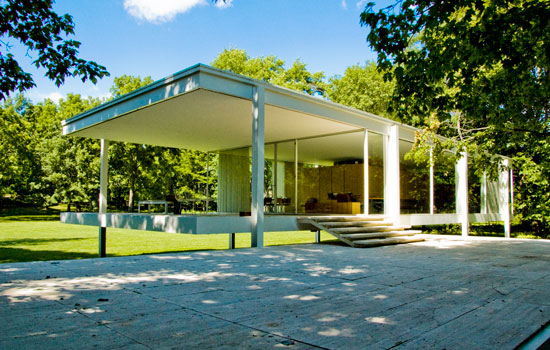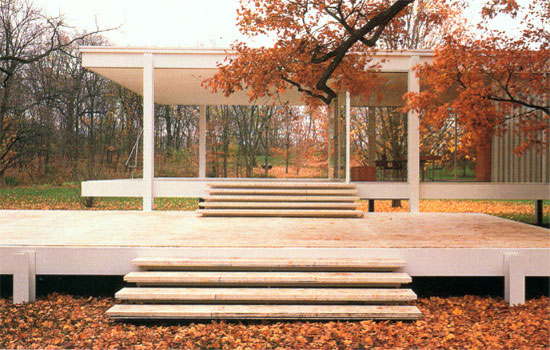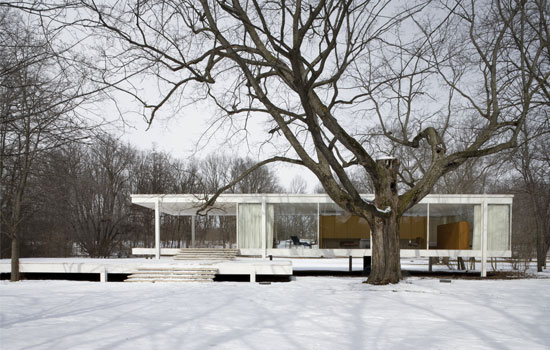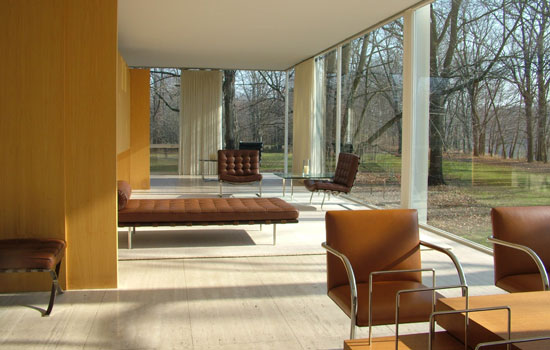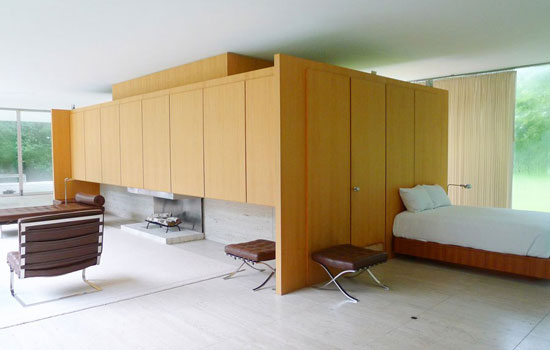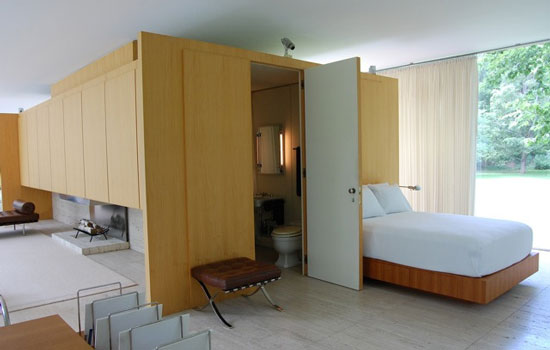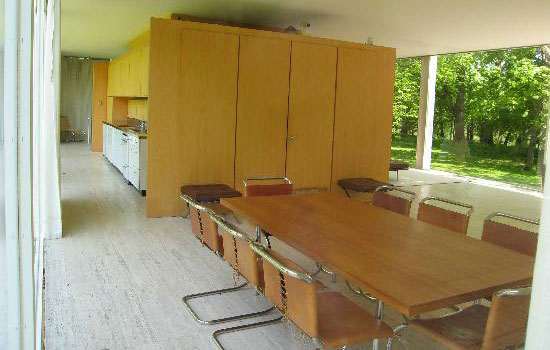Mies van der Rohe's Farnsworth House
FARNSWORTH HOUSE has come to epitomize the International Stlye in American architecture. Designed in 1945 but not built until 1951, Farnsworth house is Mies van der Rohe’s iconic Mid-Century Modern home. Built in Plano, Illinois along the Fox River, the sleek and streamlined house melds beautifully with the surrounding wooded area. It’s complete wall of glass allows the visitor to feel at one with nature (as well as a bit of an exhibitionist).
The kitchen, bathroom, and storage are all built into the house’s center core with very little of anything else to obstruct the view. Floor to ceiling curtain create some amount of privacy but it is truly a minimalist’s dream house. Populated with classic van der Rohe furnishings – Barcelona chairs, couch, stools, and table, and MR20 dining table and chairs — with travertine floors and minimal solid carpeting.
Often called a glass box, the house was designed as a retreat for Dr. Edith Farnsworth, a wealthy Chicago nephrologist as a one room weekend retreat. Farnsworth met van der Rohe at a dinner party in 1945 and asked him to build an important piece of architecture for her. She instructed him to build it as if he were building it for himself. Mies accepted and finished the design in time for a model to be included in an exhibition of his work at New York’s Museum of Modern in 1947. It was lauded as a significant modern icon even before it was built.
Construction began in 1950 but was marred by several lawsuits — van der Rohe sued Farnsworth for non payment of invoices and Farnsworth sued van der Rohe for cost overruns. In the end van der Rohe won the suits (overruns had been approved by the client) and Farnsworth was ordered to pay the bills. Mies was never pleased that he personally did not complete such an important commission as the porch screens were finished by an assistant and no new furnishings were designed. Farnsworth continued to use the 1500 square foot house for 21 years as her retreat, often hosting parties for the architectural conoscenti, and sold it in 1972.
The new owner, Peter Palumbo, removed the bronze screens van der Rohe had designed to enclose the porch, extensively re-landscaped the property to accommodate his modern sculpture collection and, most importantly, furnished the house with van der Rohe’s furniture. Palumbo, after living in the house for 31 years, tried to sell it to the State of Illinois to be turned into a museum. The state could not bring itself to spend the $7 million and the house was put up for sale. The Friends of the Farnsworth House, the National Trust for Historic Preservation, and Landmarks Illinois were jointly able to purchase the property. The house has been restored to its pristine condition and is operated by the National Trust as a house museum.
FLOODING AT FARNSWORTH
The setting on the Fox River is extraordinary but it does come with it’s drawbacks. The floating terrace was not named as such because of local flooding but increased flooding remains a significant problem for the museum. In September of 2008, Hurricane Ike inundated the Fox River causing massive flooding and water rising 18 inches above the Farnsworth House’s travertine floors. Several options for resolving the issue include elevating the house, installing hydraulic lifts to raise the house in times of flood, or relocating the house. The last, being the most drastic, would completely alter this masterpiece.
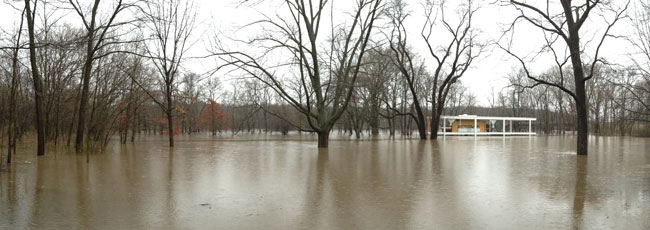
Visit Farnsworth House’s website for more information on how you can visit.

